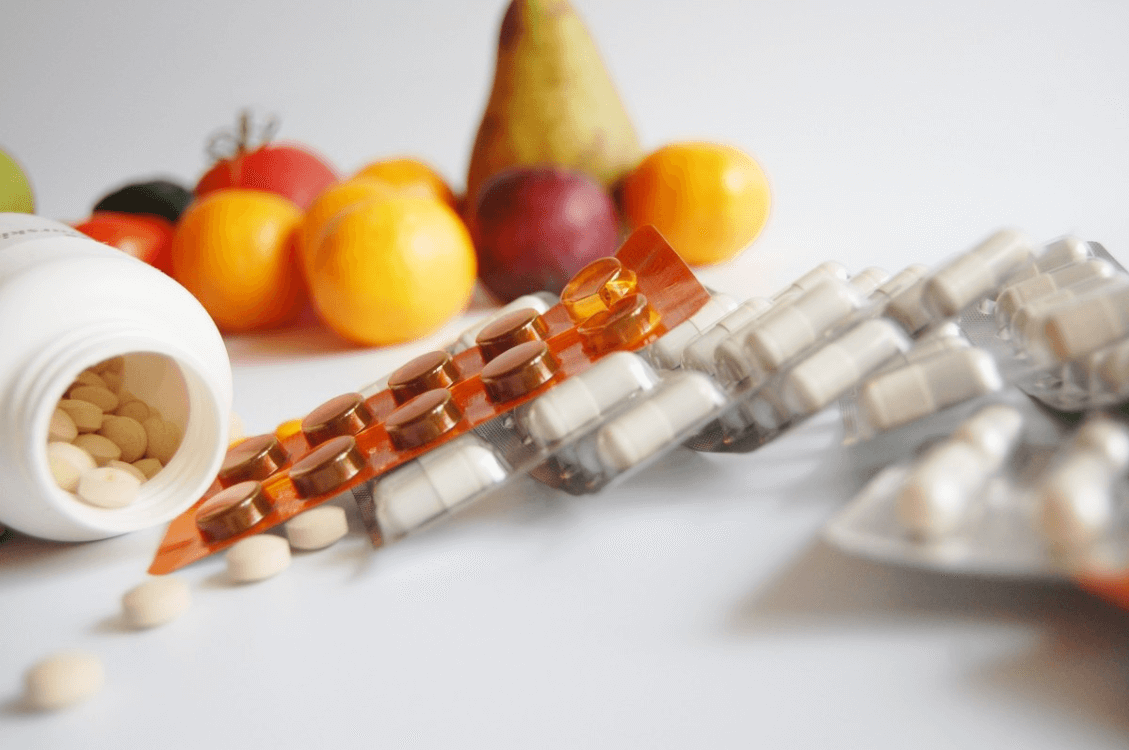How to Increase Vitamin D Levels Quickly
It’s not always easy to tell if you’re getting enough vitamin D. The early indicators of a vitamin D deficiency ? fatigue, hypertension, and depression ? can all be explained as the results of stress or other factors. The only way to know for sure if you have a deficiency is to get tested, which most people rarely do. Unless you regularly spend time in direct sunlight, there’s a good chance you are lacking the vitamin D your body needs to operate at its best.
Maintaining healthy levels of vitamin D is crucial for many of your body’s functions, but many of us aren’t getting nearly enough of it. Recent studies have shown that nearly nine out of ten adults in the United States are vitamin D deficient, which is linked to increased risks of various cancers, cardiovascular disease, immune disorders, depression, and other adverse health conditions.
If you’re suffering from a vitamin D deficiency, it’s in your best interest to get yourself back up to recommended amounts quickly. Restoring your levels to where they should be can help prevent health problems and leave you feeling and functioning better in your daily life. Fortunately, there are many simple, healthy, and effective ways to increase vitamin D levels.
What is Vitamin D?
Vitamin D is a vitamin that our bodies can produce naturally. It’s stored in the liver, but because vitamin D is fat-soluble, it can also be absorbed by fatty tissues, which prevent it from being put to good use elsewhere in the body. Being overweight can make it harder for your body to circulate the vitamin D it needs.
Vitamin D works as a secosteroid hormone in our bodies, and the human body creates it by absorbing sunlight. Ultraviolet rays convert a type of cholesterol in our skin into vitamin D3. Vitamin D2, the other type of vitamin D, typically comes to us from the foods we eat.

Sunshine is one of the best natural sources of vitamin D.
Once the vitamin passes into our bloodstream and goes through our liver and kidneys, it goes through enzymatic conversion, converting it into metabolites that function like hormones. These metabolites are what vitamin D tests measure to determine whether or not you have a deficiency.
After they’ve been activated, the vitamin D metabolites then go to work helping our bodies absorb necessary minerals. They also help to regulate mood and blood pressure, maintain our immune system and bone structure, and carry out many other vital functions.
The Health Benefits of Vitamin D
Some of the benefits associated with keeping up your vitamin D levels include:
- Maintaining healthy bones and teeth
- Supporting the immune system
- Reducing feelings of depression and anxiety
- Preventing certain types of cancer
- Reducing the risk of developing Type 2 Diabetes
- Improving muscle strength and function
Strengthening our bones is one of the primary and most important functions of vitamin D, as it makes it easier for us to absorb calcium and phosphorus through our intestines. This benefit is particularly important for older people, as the increased bone and muscle strength can help prevent falls, which are a major cause of serious injury for the elderly.
Vitamin D has also been shown to help our bodies defend against respiratory infection, like influenza and the common cold.
The Dangers of Vitamin D Deficiency
On the other side of the coin, having low levels of vitamin D can result in an increased risk of harmful conditions, such as:
- Osteoporosis
- Osteomalacia
- Fatigue
- A weakened immune system
- Dementia and Alzheimer’s disease
- High blood pressure
- Insomnia
- Rickets
There are a number of other diseases and conditions that are associated with a lack of vitamin D, such as hair loss, muscle pain, inflammatory bowel disease, and fibromyalgia.
Vitamin D is also important for pregnant women, as low levels of vitamin D during pregnancy have been linked to increased rates of preeclampsia, gestational diabetes, and low birth weight.
Getting Vitamin D the Natural Way
It’s usually not difficult to naturally increase vitamin D levels, primarily through exposure to sunlight and by eating foods rich in vitamin D. Sunlight is actually the most efficient way to get your daily recommended dose of vitamin D, as your skin is quite effective at producing it naturally when exposed to ultraviolet light from the sun.
For most adults, ten to twenty minutes in direct sunlight is enough to absorb enough vitamin D for the day. Lighter-skinned people absorb vitamin D more quickly than people with darker skin, so if you fall into the latter category, you may need to spend more time ? up to forty minutes ? to get the amount of vitamin D you need.
While it’s always a good idea to protect yourself against the possibility of developing skin cancer, it is true that sunscreen prevents vitamin D absorption. If you can, spend some time in the sun getting your daily dose of vitamin D before you put sunscreen on, or just apply sunscreen to the more sensitive parts of your body, like your face.

Vitamin D helps build strong bones.
But certain medications, like antibiotics or even Ibuprofen, can make people more susceptible to exposure from the Sun. Standing in the sun for even a few minutes could mean a sun rash or worse. Similarly, certain people just burn more easily in the sun, due to the makeup of their genes. All of this makes supplements, like a vitamin D spray, a safer choice. It’s also a metered dose, making it easier to know exactly how much you’re getting. (And it tastes great!)
Diet can also be an important source of vitamin D. Some foods that are naturally rich in vitamin D include:
- Salmon
- Tuna
- Mackerel
- Shrimp
- Sardines
- Eggs
In addition to these sources, some foods are fortified with vitamin D, like milk, yogurt, cereal, and orange juice. Certain mushrooms can also be a good source of vitamin D if they have been exposed to ultraviolet light while growing.
In order to actually benefit from your vitamin D intake, it’s also important to get enough of the other vitamins and minerals that help your body absorb and utilize vitamin D. These include vitamin A, vitamin K, zinc, boron, and, most importantly, magnesium. Eating beans, nuts, and fish can help you get enough of these essential nutrients.
The Benefits of Vitamin D Supplements
Not sure if eating shrimp scampi and standing out in the sun for fifteen minutes is getting enough vitamin D into your system? It is difficult to tell exactly how much vitamin D you’re getting when you go the natural route, and constantly testing your levels is obviously impractical. That’s why supplements can be especially helpful when you’re trying to track your actual vitamin D intake or recover from a deficiency.
Supplements are the easiest way to quickly increase vitamin D levels, and they are the only way to know exactly how much vitamin D you’re adding to your body. Even if you’re sunbathing regularly, everybody produces different amounts when exposed to the sun. You can’t know for sure how much vitamin D you’re naturally producing, and inviting a sunburn by staying out for extended periods of time is hardly the optimal way to go.
By incorporating supplements into your diet, you can control exactly how much vitamin D you get each day, ensuring a consistent and measurable intake with no guesswork involved.
How Much is Too Much?
The recommended daily intake of vitamin D is 400 international units (IU) for infants less than one year old, 600 IU for children, adults, and pregnant women, and 800 IU for adults over 71 years old. If you have a vitamin D deficiency, your doctor may recommend increasing the amount until your levels are restored to where they should be.
On the opposite end of the spectrum, excessive consumption of vitamin D can be harmful. Overdosing can cause hypercalcemia, which can lead to calcium deposits in your organs and soft tissues, which can be damaging and painful.
Because of this, it’s important to take high-quality supplements with a known and consistent dosage when you’re trying to increase vitamin D levels. Of course, you always want to consult with your doctor, before making any significant changes to your diet or vitamin intake.
Don’t Let a Vitamin D Deficiency Keep You Down
It’s always a good thing to get key vitamins and nutrients the natural way, but when you’ve been diagnosed with a vitamin D deficiency, it’s a good indicator that your lifestyle just isn’t bringing you into contact with the foods and sunlight you need to keep your vitamin D levels up without help.
The truth is that many of us just don’t find it easy to spend time outside, while the sun is out. Obligations to our jobs, families, education, and other responsibilities of modern life don’t leave us with many opportunities to step out and let our skin convert UV rays into vitamin D. Climate, skin sensitivity, and other factors can also work against us here.
Diet can help, but with seafood and eggs being the best natural food sources for vitamin D, vegetarians and vegans are at a huge disadvantage. Even if you do consume meat and fish, you’d have to eat a heck of a lot of salmon and tuna every day to eat your way out of a vitamin D deficiency.
If you really need to increase vitamin D levels fast, a high-quality, natural supplement is likely to be your best bet. You’ll know exactly how much you’re getting and can get your levels back up quickly while working on the lifestyle habits that will keep you from falling into a deficiency again.



